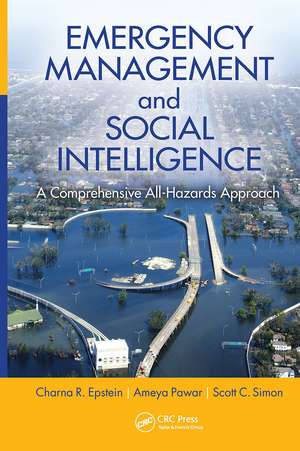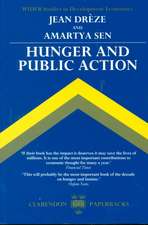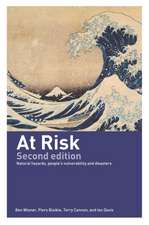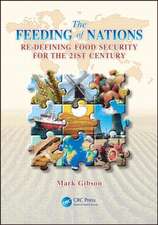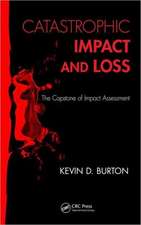Emergency Management and Social Intelligence: A Comprehensive All-Hazards Approach
Autor Charna R. Epstein, Ameya Pawar, Scott. C. Simonen Limba Engleză Hardback – 19 dec 2014
After an overview of what we’ve learned and what we haven’t learned from past events, the book provides detailed case studies on a spectrum of disasters spanning a century, including hurricanes, floods, earthquakes, and oil spills. This context provides a framework for understanding a host of essential issues, including:
- The interplay between how people perceive people in their communities, the public policy which results from socially constructed views, and the issues which surface during and after disaster as a result
- The base logic of Social Intelligence which is rooted in the U.S. national security and intelligence apparatus
- The application of the intelligence cycle in emergency management and how to develop and understand situational awareness
- Baseline data points applicable to any community or jurisdiction and how they can be woven together to build on existing jurisdictional competence and real-time situational awareness
- How geographic information systems (GISs) are used in emergency management, along with their limitations and the different software programs available
- Modeling for disasters and how this helps the emergency management community plan for and respond to disasters
- How emergency managers can use social intelligence to build resiliency at the local level and harness preexisting community strength before, during, and after a disaster
Preț: 1001.84 lei
Preț vechi: 1221.75 lei
-18% Nou
Puncte Express: 1503
Preț estimativ în valută:
191.75€ • 199.43$ • 160.69£
191.75€ • 199.43$ • 160.69£
Carte tipărită la comandă
Livrare economică 14-28 martie
Preluare comenzi: 021 569.72.76
Specificații
ISBN-13: 9781439847978
ISBN-10: 1439847975
Pagini: 248
Ilustrații: 24 black & white illustrations, 1 black & white tables
Dimensiuni: 156 x 234 x 18 mm
Greutate: 0.5 kg
Ediția:New.
Editura: Taylor & Francis
Colecția CRC Press
Locul publicării:Oxford, United Kingdom
ISBN-10: 1439847975
Pagini: 248
Ilustrații: 24 black & white illustrations, 1 black & white tables
Dimensiuni: 156 x 234 x 18 mm
Greutate: 0.5 kg
Ediția:New.
Editura: Taylor & Francis
Colecția CRC Press
Locul publicării:Oxford, United Kingdom
Public țintă
Academic and Professional Practice & DevelopmentCuprins
Emergency Management and the Need for Social Intelligence. What We Have—and Haven’t—Learned. Emergency Management Approach. Military/Paramilitary Structures and Emergency Management. Situational Awareness. Situational Awareness—Response and Recovery. Disaster Case Studies. Interplay between Public Policy and Social Policy. The History of Disaster Relief and Social Welfare Policy. Process of Declaring a Disaster—State Process and the Stafford Act. Politics, Perception, Disaster, and Social Intelligence. Perceptions of Poverty and Disaster. Perceptions, Reality, and Why We Care. Social Intelligence Framework and Intelligence Methodology and Emergency Management. Intelligence Methodology and Emergency Management. Intelligence Methodology and Emergency Management. History of Intelligence. History of U.S. Intelligence. Comprehensive Study—Geopolitical and Socioeconomic Landscape. Intelligence in Action in Emergency Management. Intelligence Cycle. Program and Policy Prescriptions. Implementing Social Intelligence. Implementing the Intelligence Cycle in Emergency Management. Real-Time Situational Awareness—Social Intelligence. Connecting the Dots. Developing BDPs—Management Perspectives. Understand That Information Is Currency for Emergency Management. Historical Analysis of Major Events. Baseline Data Points. Drilling Down on Baseline Data Points. Nongovernmental Entity BDPs. Corporate BDPs. Geographic Information Systems and Modeling for Disaster. GIS Components. GISs in All Phases of Emergency Management. GIS Modeling for Social Intelligence. Scenario-Based Planning. Identifying Emerging Trends. Socializing Scenario-Based Planning into Management Communications. Spatial Decision Support and GISs. Insurance Industry and GIS Technology. Supply Chain Management and GIS. Social Intelligence for Emergency Management: A New Paradigm. Hyperlocal Social Intelligence. Block Clubs and Community Organizations. Religious and Faith-Based Organizations. Chambers of Commerce. Local Historical Societies and Museums. Local Post Offices and Banks. Think Locally, Act Globally. Budgets and Disaster. Green Infrastructure. Investing in Vulnerable Communities. Investing Pension Funds Locally. Zoning Policies. Open Government—Open 311, Predictive Analytics, and BDPs to Inform Government Decision Making. COAD/VOAD. Lessons Learned from Recent Events. Municipal Credit Ratings. Unique Social Factors as a Result of Location or Size. Public Transportation. Language Access, Cultural Competence, and Historical Issues Related to Immigration.
Notă biografică
Charna R. Epstein is the Chief Operating Officer at the University of Chicago Urban Education Institute (UEI). Prior to her work at UEI, Charna spent over ten years working in emergency and disaster management, primarily as the Director of Crisis Prevention, Resettlement and Disaster Recovery at Heartland Alliance for Human Needs and Human Rights. Charna also worked in Chicago government for three years and as a fellow at FEMA Region V. Among a number of awards, she was the recipient of the 2011 Red Cross Hero Award for disaster relief and preparedness work. Charna holds a M.Sc. in Threat and Response Management (2009), a M.A. in Social Service Administration (2005), both from the University of Chicago; and a B.A. from Brandeis University (1999).
Ameya Pawar serves as the Alderman of the 47th Ward on the Chicago City Council. He was elected to office in 2011. Since taking office, Ameya has passed legislation creating an independent budget office for Chicago City Council, passed the nation’s strongest anti-wage theft ordinance, and served on the Chicago Open 311 steering committee. Prior to taking office, Ameya spent 5 years working in emergency management and business continuity planning at Northwestern University. Ameya was a United States Department Scholar in 2009 and was named to Crain’s Chicago Business 40 under 40 list in 2011. Ameya holds a M.Sc. in Threat and Response Management from the University of Chicago (2009) and a M.P.A. in Public Administration from the Illinois Institute of Technology (2007).
Scott C. Simon works at BCFS Health and Human Services in the emergency management division in San Antonio, Texas. He holds a M.Sc. in Threat and Response Management from the University of Chicago (2009) and a B.A. from Texas State University (2007).
Ameya Pawar serves as the Alderman of the 47th Ward on the Chicago City Council. He was elected to office in 2011. Since taking office, Ameya has passed legislation creating an independent budget office for Chicago City Council, passed the nation’s strongest anti-wage theft ordinance, and served on the Chicago Open 311 steering committee. Prior to taking office, Ameya spent 5 years working in emergency management and business continuity planning at Northwestern University. Ameya was a United States Department Scholar in 2009 and was named to Crain’s Chicago Business 40 under 40 list in 2011. Ameya holds a M.Sc. in Threat and Response Management from the University of Chicago (2009) and a M.P.A. in Public Administration from the Illinois Institute of Technology (2007).
Scott C. Simon works at BCFS Health and Human Services in the emergency management division in San Antonio, Texas. He holds a M.Sc. in Threat and Response Management from the University of Chicago (2009) and a B.A. from Texas State University (2007).
Descriere
For effective preparedness, emergency managers must comprehend how a disaster impacts not only the physical infrastructure of the affected community but also the population. They must understand how the people interact with one another, how they interact with government, and how they react to the disaster event. This text provides a comprehensive framework for understanding a community before, during, and after a disaster in order to best mitigate the effects on its people. It supplies emergency managers, policy makers, and elected officials with a powerful blueprint for implementing social intelligence in any community or organization.
